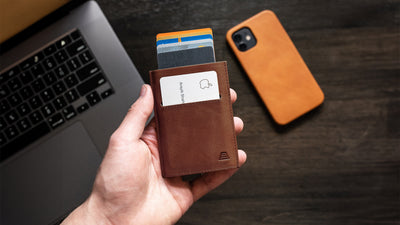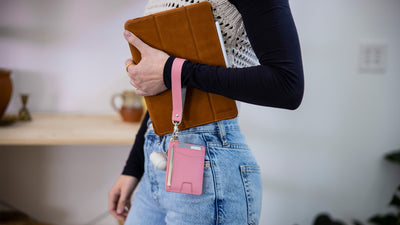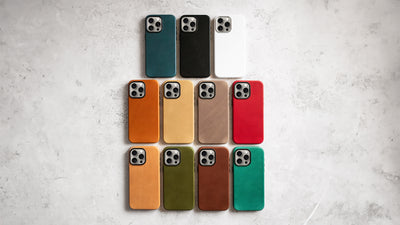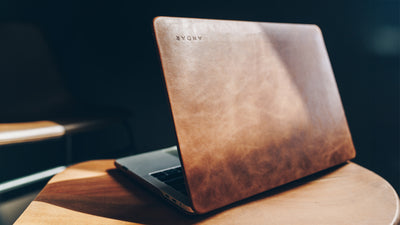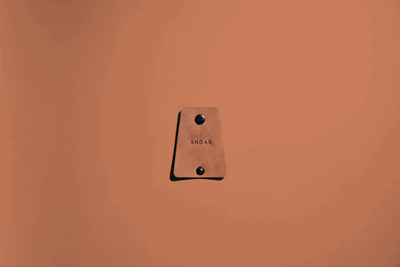The Blog
How To Repair Leather: A Guide to Tears and Rips
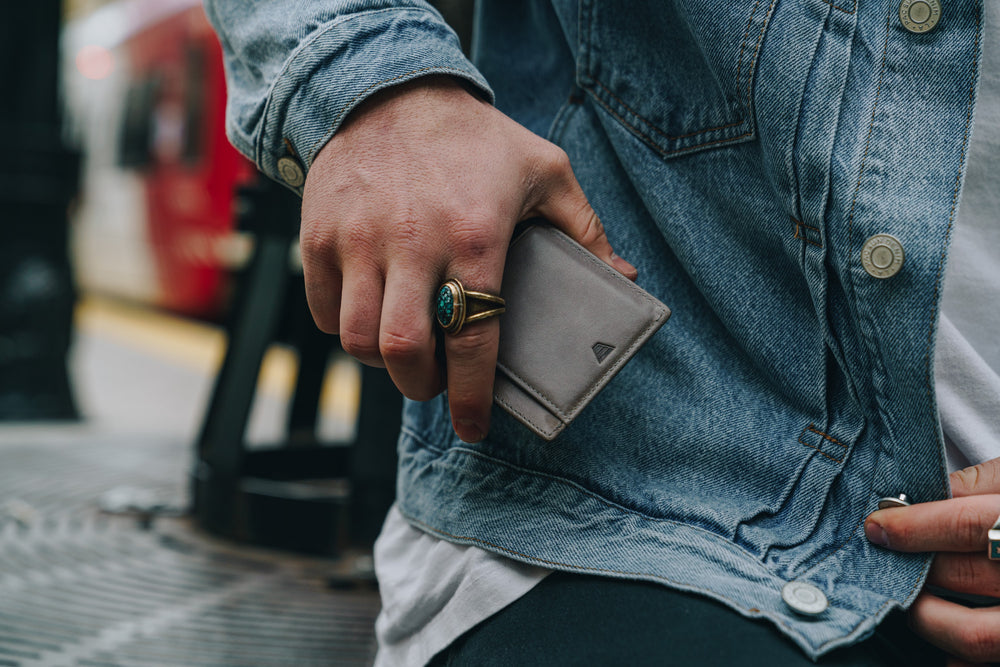
Full-grain leather is a durable material that’s meant to last you decades. But what happens when, by some unfortunate accident, you end up getting a tear in it?
Well, your first thought might be to bring it to a professional repair shop, which can certainly work. But if you’re a do-it-yourself kind of person, then it’s completely possible to fix the rip on your own.
Check out this guide from Andar on doing just that.
Why Did My Leather Rip?
To get to the bottom of why your leather ripped, let’s discuss some of its properties.
If you have a full-grain leather accessory, then it likely came from a natural material called cowhide. The hide that’s used for making leather contains mostly water, fat, and protein. This is great for an animal but not so much for making long-lasting leather.
So, to turn these cow hides into leather, they must go through a process called tanning. This process removes moisture and fat while strengthening the fibers in the proteins. This creates an incredibly strong material that’s highly resistant to decay.
However, the removal of moisture can have its downsides. If the leather dries up too much due to sunlight exposure and lack of regular maintenance, it can be much more likely to develop tears in it. And, of course, even the most well-maintained leather can still suffer from damage if, for instance, it accidentally comes in contact with a nail.
So, while leather is certainly one of the most durable natural materials you can think of, there is still the possibility that it might rip. Fortunately, it’s completely possible to fix the damage on your own and to make your leather look as good as new.
How to Fix a Tear or Rip In Leather
While there are many different types of leather out there, the process of fixing rips in them is pretty much the same.
Here are the steps you should follow if you ever find a tear in your leather:
1: Assess the Damage
Maybe your cat found your purse unattended. Maybe your bag came in contact with a pair of scissors. Maybe you somehow got a puncture in your favorite leather wallet. These things happen to the best of us!
With that being said, repairing the leather on your own is a good idea only if the tear isn’t too large. If it’s several inches across, then you’re good to fix it on your own. But if it’s bigger, then you should at least consult with a professional. (And if it’s just a scratch, then the course of action will be completely different.)
2: Buy a Leather Repair Kit
A leather repair kit has literally everything you need to fix the tear in your leather. It will include a piece of fabric (this will make sense later), leather glue, leather paint, and a palette knife for applying all of the aforementioned. Some will even include a leather oil.
You can easily find an inexpensive leather repair kit online. Don’t despair if you can’t find something specifically for fixing leather accessories. Leather repair kits are an all-purpose solution to all kinds of leather items.
3: Cut Out a Piece of Fabric
Now that you have your repair kit, the first thing you need to do is cut out a piece of fabric that you will use to patch up the tear. It should be slightly (but only slightly) larger than the tear itself. If your tear is very small, then you might not need a fabric patch at all and can just use leather glue to mend it.
4: Slide the Fabric Under the Tear
The details of how this is done will depend on the kind of tear and whether there is a liner under the leather. Either way, you can grab the piece of fabric that you cut out and slide it under (or behind) the tear by lifting up its edges. Once the fabric is completely covering the gap in the leather, you can release it.
5: Apply Glue to the Tear
Now, using your palette knife, you can apply glue between the tear and the fabric. Do this by lifting up each edge of the tear in the leather individually and applying the glue to each side.
6: Apply Pressure Between the Leather and Fabric
Now that you applied the glue, you can put away your palette knife and begin to apply pressure to the patch. This will make the glue really stick between the leather and the fabric patch. Make sure to do this in a way that gets the glue to come in contact with all sides of the fabric patch.
7: Let the Glue Dry
Always follow the instructions on the repair kit as the types of glue used in them may be different. It can take some glues only 30 minutes to dry, while others may need to be left alone for several hours.
If your kit doesn’t mention anything about drying time, then err on the side of caution and let the glue dry for at least three hours.
8: Apply Some Leather Filler
Leather filler is supposed to fill in any small gaps that are left over and to overall smooth things out. To apply it, first, wash your palette knife thoroughly and let it dry off.
Next, apply some leather filler to your palette knife. Then, apply the filler to the tear using a layering technique with the palette knife. Repeat this several times until the surface of the tear is completely filled in and smooth.
9: Let The Filler Dry
It’s important to follow instructions for letting the filler dry, too. But in case the instructions are missing for that, let the filler dry overnight. Make sure to thoroughly wash your palette knife as you may need to use it again the following day.
10: Apply Additional Filler (Optional)
Once the filler has had a chance to dry, run your hand over the tear. If you don’t feel any bumps, then you can move on to the next step. However, if you feel that the tear is uneven, then repeat the previous two steps by applying more filler to the spot.
11: Mix the Paint Colors
Now that the tear is all patched up, you want to color over it to make it blend in with your leather. Your leather repair kit should include all the colors of the rainbow, which you can mix until you get to your desired hue.
Grab a disposable plastic container and follow these guidelines for color mixing. If you need to darken the color, you can add black. Conversely, white can be added to lighten it.
Keep in mind: Your tear is fairly small, so you really don’t need a lot of color to paint over it. For this reason, mix just a few tablespoons of color and save the rest for any possible future tears.
12: Apply the Paint
Use a small brush (which preferably would’ve been included in your kit) and begin to apply the color to your mended tear. The key here is to use as little paint as possible so that you don’t cause clumping. Instead, build it up with each application.
You might notice that your paint color doesn’t match your leather to a tee. That’s perfectly fine as it’s nearly impossible to get the same exact color as your leather. Besides, no one will be able to notice the color difference due to the tear’s small size.
Once you’re done applying the paint, let it dry for a few hours before proceeding to the next step.
13: Apply Some Leather Oil
A leather oil might not be included with your repair kit but is nonetheless an important step in fixing a tear. It’s very likely that the rest of your leather piece had oil applied to it and took on a certain appearance because of it. You want to do the same thing to the newly-mended part of your leather.
So, grab some leather cream and apply it to the part you just finished patching up. Let it dry in a well-ventilated area for several hours, and you’ll be finally good to enjoy your leather accessory.
Take Care of Your Leather
If you’re putting this much effort into repairing your leather goods, then you clearly see their value. Leather goods are tough, durable, and meant to last you for decades. Take care of your leather by fixing small rips and tears as they arise and keep it looking as good as new for years to come.
And to switch things up, consider trying out a slightly different material. We promise; this one won’t ever rip on you!
Our Sources:
Hides Into Coats: An Ancient Craft | The New York TImes
What You Need to Know About Color Theory for Painting | The Spruce Crafts
Leather Repair: How to Fix Tears With a Leather Repair Kit (DIY) | Family HandyMan
